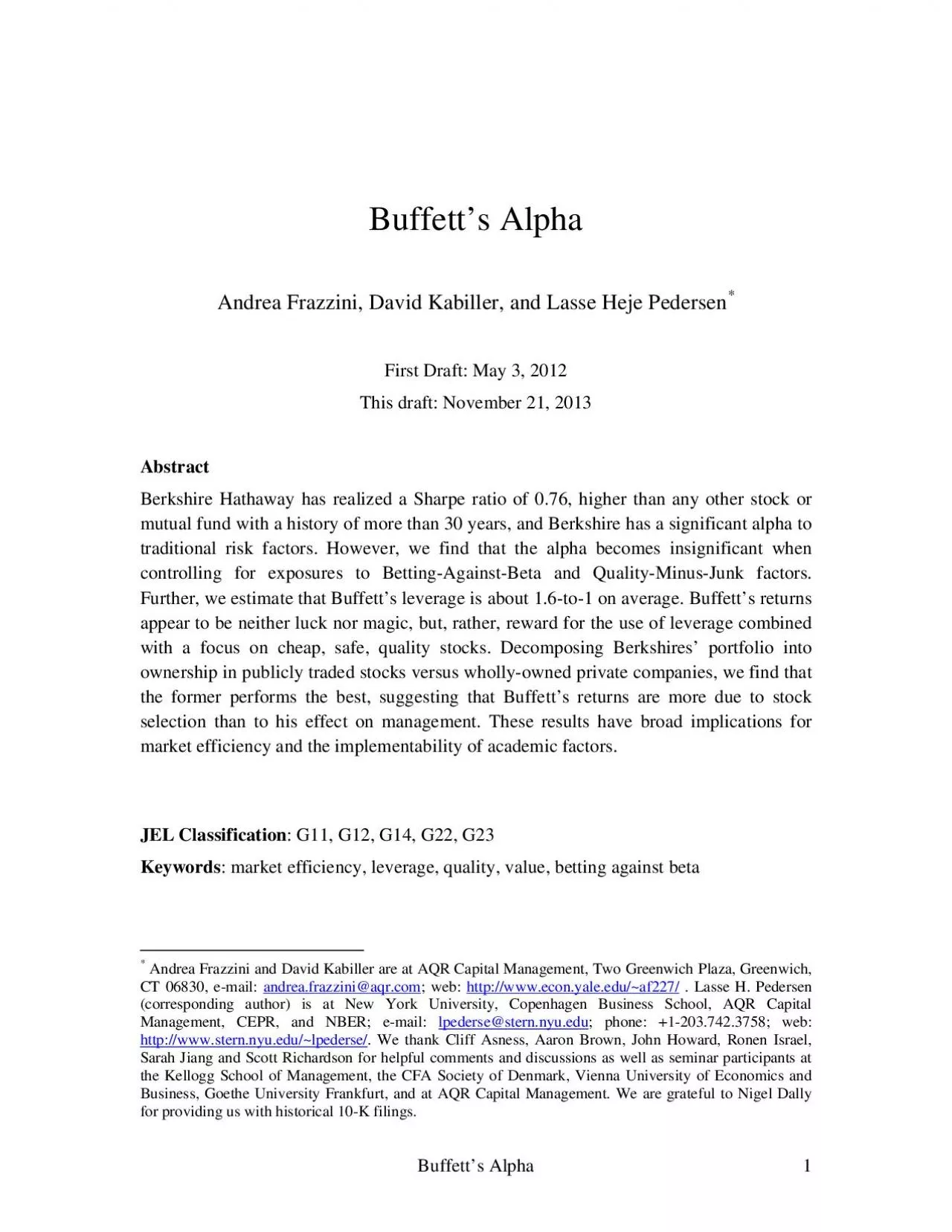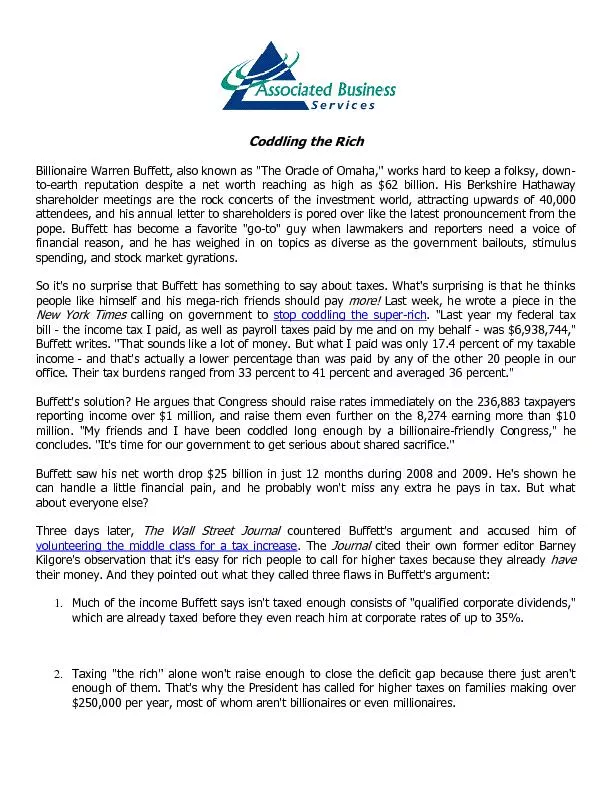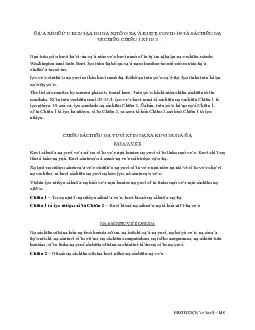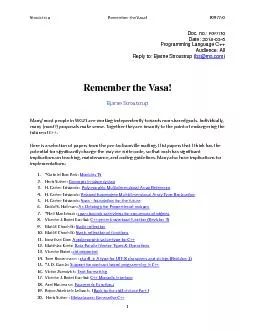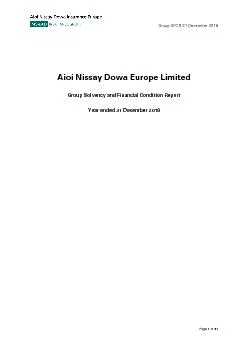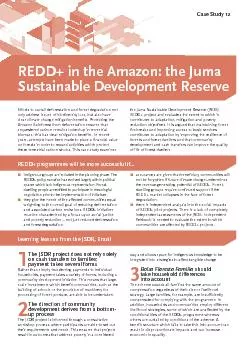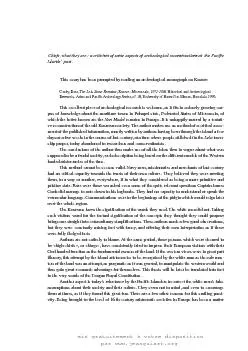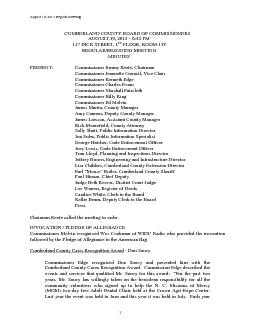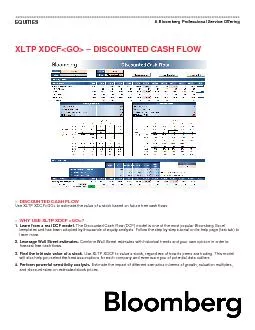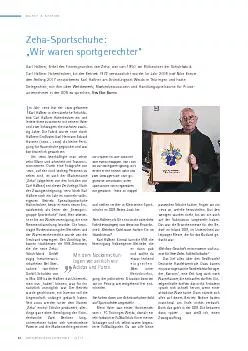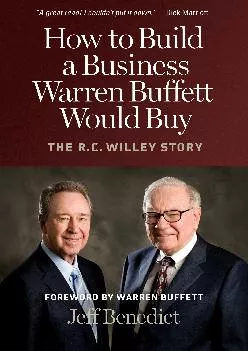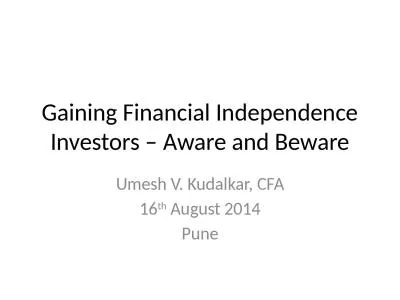PDF-�� Buffett’s AlphaBuffett’s AlphaAndrea Frazz
Author : daniella | Published Date : 2021-01-11
Andrea Frazzini and David Kabiller are at AQR Capital Management Two Greenwich Plaza Greenwich CT 06830 Lasse H Pedersen corresponding author is at New York University
Presentation Embed Code
Download Presentation
Download Presentation The PPT/PDF document "�� Buffett’s AlphaBu..." is the property of its rightful owner. Permission is granted to download and print the materials on this website for personal, non-commercial use only, and to display it on your personal computer provided you do not modify the materials and that you retain all copyright notices contained in the materials. By downloading content from our website, you accept the terms of this agreement.
�� Buffett’s AlphaBuffett’s AlphaAndrea Frazz: Transcript
Download Rules Of Document
"�� Buffett’s AlphaBuffett’s AlphaAndrea Frazz"The content belongs to its owner. You may download and print it for personal use, without modification, and keep all copyright notices. By downloading, you agree to these terms.
Related Documents

